
Our next stop was Guayaquil, Ecuador. It is the largest city in Ecuador with about about 3.5M out of 15 million people. About 90% of the of Ecuadorian imports come through the port. We spent most of our time outside the city and therefore got to see the country side and the rural population.

Our first stop was a fruit stand (one of many on the side of the road). We tasted three different kinds of mangoes: a Tommy, an Edward, and a sucking mango. They got sweeter as we progressed. The sucking mango is named because that is how you eat it. You take the mango and give a deep massage. When it gets soft, you bite it to break the skin and then suck out the juice. All of the them were very good. We also tasted a guaba nut or the fruit around the nut.
In the van, on the road, we tasted a fresh pineapple. It was incredibly good. We are given plastic bags to use as gloves because it was so juicy.
Out first major stop was at a Mangrove preserve where we were going to take a ride on the estuary to see wildlife, mostly birds. On the trail to the dock, our guide, Eddie, told us about mangroves. They have aa unique symbiotic relationship with red crabs. The crabs eat the leaves which fall from the mangroves. Eddie dropped a dead leaf near a crab hole and a crab scuttled out and grabbed in and scuttled back into his hole. Because of the crab holes, there is oxygen in the mud so the leaves that decompose do not smell. Eddie took a stick and dug up some of the mud so we could smell it. The tide was out; otherwise where he was standing would underwater.
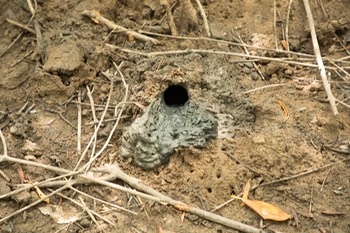
When crab holes begin to get too much mud in them the crab gets rid of the mud with a bit of housecleaning. You can see the fresh mud outside of this hole.
The crabs are edible and they are gathered in preserve under special license. There are 1500 crabbers and they can gather 96 crabs per day. To get the crabs they stick there arms into the holes and grab the crabs. They have a technique to avoid getting bit, but if they do get bit they endure the pain to avoid declawing the crab and making it useless. Sometimes their arms are completely in the hole when they reach the crab. They are only allowed to get male crabs. If they are found with a female crab, there are severe penalties. They sell for a about $1/crab. Not a job for me. The next picture is of a crab hanging out in his hole.
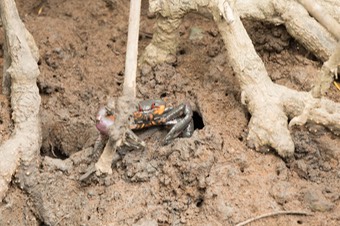
Mangoes live in salt or brackish water. Somehow they have to get rid of the salt they absorb. The black mango sweats the salt out through its leaves. Eddie gave us each a black mango leaf and had us lick it. It tasted very salty. For red mangoes, one the leaves in each cluster gets all the salt in it and effectively dies. Once that leaf falls off, another leaf gets the salt. What a fascinating plant.
We boarded our boat (essentially a large dugout canoe with a motor and headed up the estuary.We saw lots and lots of birds. And, took lots and lots of pictures. Below is a sample of some them.
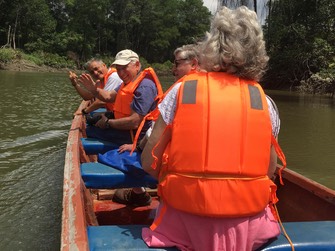


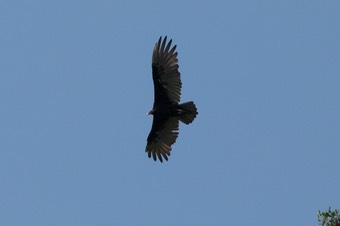
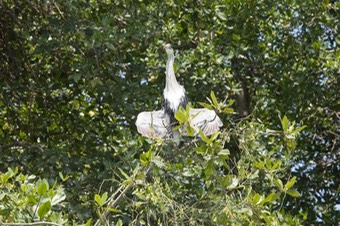
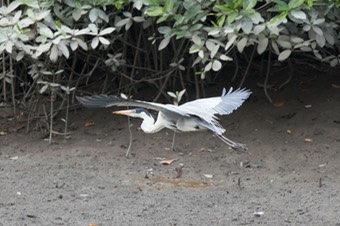
The bird in the lower left looks like it doing yoga.
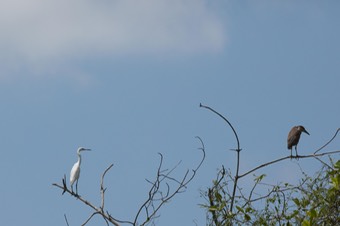
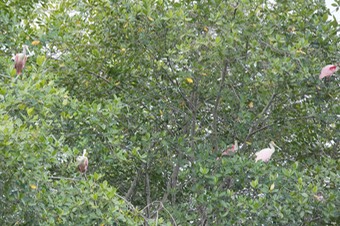
The birds on the right are Rose Spoonbills.
More on Guayaquil in the next post.
